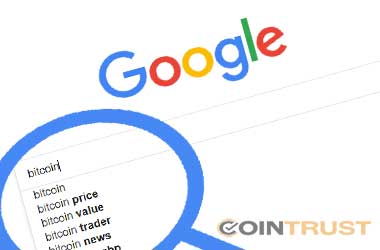
BigQuery, a powerful data analytics tool, serves as a repository for extensive datasets, both public and private. In 2018, Google collaborated with cryptocurrency enthusiasts to provide developers with free and open access to Bitcoin blockchain data. Subsequently, Google Cloud expanded its data coverage by incorporating six more blockchains.
James Tromans, Head of Web3 at Google Cloud, emphasized the significance of this expansion, stating that it offers a straightforward means for individuals unfamiliar with cryptocurrencies to engage with the ecosystem.
Google’s Ongoing Commitment to Web3
This move aligns with Google Cloud’s ongoing efforts to become a prominent player in the Web3 landscape. In the first half of 2022, Google introduced its digital assets team and Web3 engineering division. Since their establishment, Google Cloud has forged strategic partnerships with major players in the crypto sector, including Coinbase, BNB Chain, Celo, and Casper Labs.
Furthermore, Google Cloud introduced the Blockchain Node Engine, simplifying developers’ access to and utilization of blockchains on the Google Cloud network of servers. In April, the cloud provider solidified its commitment to Web3 through a substantial partnership with Polygon Labs and the launch of the Web3 startup program, which offers incentives and grants to attract developers to build on Google Cloud.
Enhancing Blockchain Accessibility for Developers
While the inclusion of data from 11 additional blockchains into BigQuery may not be as expansive as some of Google Cloud’s prior announcements, Tromans sees it as a pivotal step towards making blockchains more accessible. He noted, “Millions of developers that are already on GCP can access this data in a way that’s familiar to them without having to understand how to run blockchain nodes.”
This expansion of BigQuery’s capabilities signifies Google Cloud’s commitment to facilitating easier access to blockchain data and fostering increased engagement with the Web3 ecosystem. With support for an array of blockchains and NFT-related data, developers and analysts now have a valuable resource at their disposal, enhancing their ability to explore and understand the rapidly evolving world of cryptocurrencies and blockchain technology.
Conclusion
Google Cloud’s recent integration of data from 11 additional blockchains into BigQuery underscores its dedication to the Web3 ecosystem. By providing a user-friendly interface for accessing blockchain data, Google Cloud aims to bridge the gap between traditional developers and the world of cryptocurrencies. This expansion not only enriches BigQuery’s capabilities but also represents another stride in Google Cloud’s journey to become a pivotal player in the Web3 landscape. As blockchain technology continues to evolve, Google Cloud’s commitment to accessibility and partnership-building positions it as a leading contender in the future of decentralized applications and digital assets.